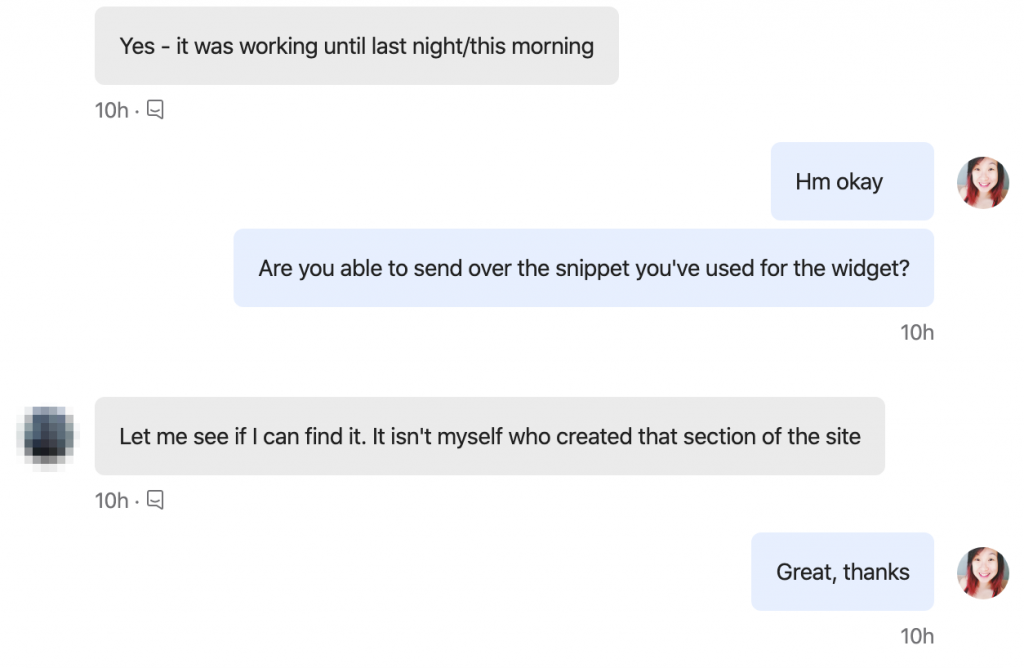Customer service and how you manage it can make or break your business. However, getting started with providing great support can be tricky. There are endless support channels available, and choosing between them is hard.
There’s no point in attempting to be good at all of them, regardless of your business or customers. Trying to be jack-of-all-trades of support means less excellence all around.
Plus, unless you have huge customer support teams, you’ll also wear yourself and your team thin.

Multitasking is a great skill to have. However, you shouldn’t have to do it to the point where it’s confusing your users or burning out your team members.
Focusing on only the support channels that make most sense for you and your customers means that you can put your energy into those specific ones.
You’ll be able to provide better, faster, more useful support, and not overwhelm yourself.
Today, we’re going to talk about some things to keep in mind when choosing support channels for your business.
Think about your team and its capabilities
The first thing to consider is your team and what it’s reasonably capable of. There are two options here—either you have a dedicated person for managing support, or not.
Let’s talk about the “not” option first. In small, early stage companies, support is often handled by the founders or other team members as a “side gig”. We do it, too—Sarah and Andrew, our founders, are pretty prominent in our support:

This is fine—and an excellent way to learn about your customers to make more educated business decisions. However, founders have other things to do. Allowing support to take up too much time is dangerous—not to even mention the disruption aspect of it.
In this case, you need to be careful about the amount and type of support channels you provide. This is to make sure it’s not hindering other crucial activities for the company.
Start out with 1-2 easy to manage support channels—ones that are realistic depending on your schedule.
For example, if you spend a lot of time in meetings and can’t jump on support issues as they come in, live chat or phone support aren’t the best option.
Instead, you can pick something where a small delay in response is expected (such as email).
If you do have people working specifically on support, consider these things:
- What kind of previous experience they have—which channels they’re best at and used to. Going with those as a starter means they’ll be more efficient from the get go.
- What they’re comfortable doing—for example, some people are great communicators in text, but hate doing phone calls.
- How much of a workload they have—again, you don’t want to take on so many channels that you lose quality across them.
Regardless of whether you have designated support people or not, availability is always something to think about.
If you have only one person available to do support, doing something that requires 24/7 attention (like phone calls) isn’t an option.
Think about who your customers are
The other crucial part of the equation is who the people that reach out to you are to begin with.
With B2B businesses, this doesn’t even necessarily mean looking at the companies. More importantly, it’s about figuring out the individual people who reach out.
For example, at Canny, most people who reach out to us for support are product managers with pretty technical questions.
This means that our support channels need to be tailored for quick responses and easy troubleshooting.

Different customers also prefer different channels. If you build software for teenagers, they’ll be more likely to reach out through social media. Highly technical software people probably prefer email or live chat.
However, if you want to be sure you’re using the best channels for your customers, consider running a survey.
You can always use logic when determining where you should offer support, but you can never really be 100% sure.
Where your customers contact you now might not necessarily be where they want to contact you.
Think about the kind of product you have
The third piece of the pie in figuring out the best support channels is the product you have.
Think about these questions:
- What kind of questions or issues do people usually have about your product or service?
- What are the main hurdles people run across?
- Is it an extremely complex product, or not really?
- How urgent are your support requests usually?
For example, if your product is something that people need to be up and running at all times, you need a faster method of support than email.
If it’s something less urgent, you can possibly afford to give yourself some time, especially if you can’t be available 24/7.
Some extra tips for support channels
Here are some more general pointers:
Make sure to regularly review your support system
Whichever channels you decide to use now, it shouldn’t be a forever decision. As your business and target customers change, your support needs to change, too.
Chances are that if your customers aren’t happy with the way support is provided, they’ll let you know. It’s still good to have regular reviews of how your support works and how much your channels are being utilized.
This way you can proactively make sure you’re still focusing on the right things.
Regardless of the amount of support channels, make sure you keep track of all of them
There’s nothing worse than support requests falling through the cracks. It makes pretty much every other support effort useless.
Ideally, you’ll have all of your feedback, requests, and reports in one place. This is especially important for teams that have several people dealing with support.
Make sure help is always available with self serve
Regardless of the other options you have available, make sure you always have some kind of self-serve support available.
Whether it’s a knowledge base, a Q and A section, or a help center is up to you.
More than six in 10 U.S. consumers say that their go-to channel for simple inquiries is a digital self-serve tool. Besides being the go-to support channel for a lot of people, it will also take some pressure off of needing to be available at all times.
Link to your self-serve resources from everywhere, just in case you can’t be in touch all the time live.
Don’t overwhelm yourself with too many support channels
It might seem tempting to reach across as many support channels as possible. The more the merrier, right?
The issue is that keeping adequate track of and managing a bunch of channels requires a lot of work. The more you spread yourself thin across a ton of communication channels, the less you’ll be able to really focus on them.
Your customers would rather have quality support that is helpful, than the option to contact you on SnapChat.
Do some thinking about which channels actually make sense for you, your customers, and your product. Sometimes, less is more!







Great content! Super high-quality! Keep it up! 🙂